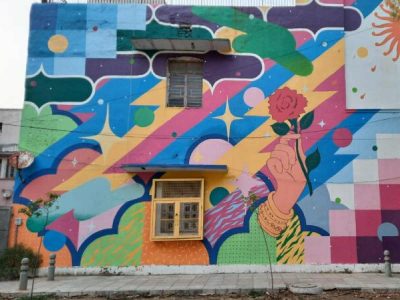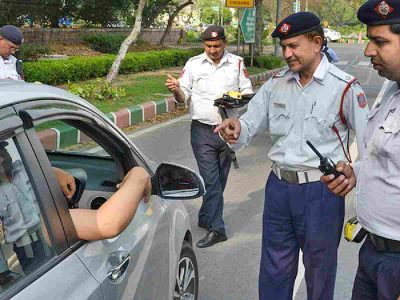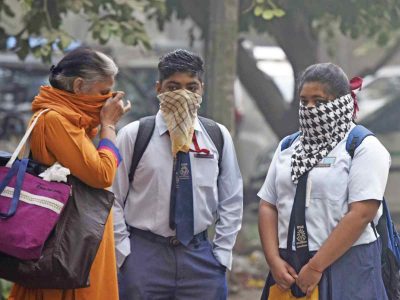More than half a century ago, eminent cricket commentator and writer Dr Ravi Chaturvedi lived in Lodhi Colony. Even today, he longs for those days gone by. The reason is simple: the vintage appeal of the location, its spacious flats, lush greenery, and buzzing markets.
And he’s not the only one.
In 2025, Lodhi Colony turns 80. Nestled in South Central New Delhi, this historic residential area was developed in 1945—the last such project taken up by the British in India. It was built primarily to house Central Government employees, and in the decades since, it has retained its unique appeal.
“Lodhi Colony reflects a blend of colonial architecture and urban planning, making it a unique and sought-after locality in the capital. Today, it remains a prestigious address, known for its greenery and cleanliness,” says former IP Singh Bawa, a former Doordarshan newsreader and long-time resident of the area.
The men who drew Lodhi Colony into Delhi’s map
The colony was designed as part of the larger Lutyens’ Delhi plan, led by British architect Walter Sykes George. He is the man behind many iconic buildings in the capital—St Stephen’s College, the Regal block of Connaught Place, Sujan Singh Park, Miranda House. He was ably supported by Robert Tor Russel, the architect who designed Connaught Place.
Together, they were part of Edwin Lutyens’ architectural team. While Lodhi Colony was meant for government officers and staff, adjacent Lodhi Estate—with its sprawling bungalows—was reserved for senior officials.
Covering roughly 1.51 sq km, the colony’s layout stands out with its broad avenues, shaded sidewalks and generous green cover—features that set it apart from Delhi’s ever-tightening urban sprawl.
A design language carved in arches and spiral stairs
Lodhi Colony’s buildings reflect a distinctly colonial architectural style, shaped by Indo-European influences. Most of the residential units are two-storey structures, often punctuated by arches that soften the transition between private and public space.

Some blocks still retain pink spiral staircases that once linked first-floor flats to the ground floor yards. Though many of these staircases are now worn and broken, they continue to lend a nostalgic charm, nestled in tropical greenery.
The flats were built with utility in mind—ventilated rooms, modest balconies or terraces, and shared gardens. Brick and plaster formed the solid bones of these homes. Their simplicity, durability and design reflect the British-era ethos.
One of Lodhi Colony’s most recognisable features is its visible front lawns and its many parks—about 12 in and around the colony, including the famed Lodhi Gardens. These open spaces have helped it retain its place as one of the greenest neighbourhoods in the capital.
Holding strong, but showing age
Eighty years on, the original flats of Lodhi Colony still stand strong—but not without strain. Some residents report crumbling ceilings or a shortage of parking. As with many parts of Delhi, water and electricity supply disruptions do occur.
Still, upkeep is largely handled by the New Delhi Municipal Council (NDMC) and CPWD. The streets remain clean, the parks groomed, and essential services functional.
“The colony’s proximity to educational institutions like Dyal Singh College, Air Force Bal Bharati School, Karnataka School, Shyama Prasad School, healthcare facilities, and cultural sites drives high demand,” says Sandy Garg, an alumnus of Air Force School.
From canvas to colony: Lodhi’s walls speak in colour
Perhaps the most dramatic transformation of Lodhi Colony in recent years has been its emergence as an open-air art district.
Walk through its lanes today, and you’re greeted by giant, vivid murals painted across building walls. This burst of colour is thanks to the St+art India Foundation—a non-profit that aims to take art out of galleries and into public spaces.
These are not just paintings; they are entire narratives. The artworks, says Pritam Dhariwal, a social worker from the New Delhi area, are diverse in style, technique, and theme, reflecting the varied backgrounds of the artists.
The murals explore subjects ranging from birds, animals, and flora to traditional motifs, deities, and interpretations of Indian life. “You would also see purely aesthetic works focusing on colour, pattern, and form,” he adds. The core art district, he notes, lies between Khanna Market and Meherchand Market in Lodhi Colony.
The other side of silence: Partition trains from Lodhi Colony
Few know that Lodhi Colony also witnessed a darker chapter in the nation’s history. Its now quiet railway station once echoed with cries of separation, during the Partition in 1947.
Thousands of Muslims from Delhi and nearby towns boarded their ‘Train to Pakistan’ from this very station. It was used exclusively for border-bound trains during the traumatic months of migration.
Former Pakistan fast bowler Sikander Bakhat’s family was among them. “My father, J Bakhat, and other members of our family had a house in Karol Bagh known as ‘Hameed Manzil’. After a lot of discussions, some members decided to move out from Delhi. They took a train from Lodhi Colony perhaps on August 20, 1947,” he recalls.

During those fateful days between the second week of August and August 22, trains to Lahore ran two or three times a day. All departures were scheduled before 12.30 pm to ensure arrival before nightfall.
Also Read: Humayun’s and Safdarjung’s tombs: A distant view of night tourism
The scenes at the station were heart-wrenching. Tearful goodbyes, wailing relatives, and expectant mothers boarding crammed coaches. Local Congress leaders such as Mir Mustaq Ahmad, Sarla Sharma, and Desh Bandhu Gupta were often seen at the station, folding hands and pleading with passengers not to leave.
“Mir Mustaq Ahmad used to narrate those momentous moments with this writer in his Darya Ganj office in the late 1980s,” notes the writer. Ahmad went on to serve as Chief Executive Councillor of Delhi in the 1970s.
Political lives behind ordinary doors
Lodhi Colony also housed some of the nation’s most influential political names during their less glamorous years.
Old-timers remember when Hemvati Nandan Bahuguna and Dev Kant Barua, former Chief Ministers of Uttar Pradesh and Assam respectively, were allotted flats here.
After Hemvati Nandan Bahuguna’s shock defeat in the 1984 Lok Sabha election from the then Allahabad, he had to vacate his 81 Lodhi Estate residence. He was subsequently allotted flat number 93 of 21 Block in Lodhi Colony under the freedom fighter’s quota, recalls Sunil Negi, an author and resident of the area. Around the same time, another senior Congress leader and former Assam Chief Minister, DK Barua, was also allotted a flat in the colony. “Those were the twilight years of both leaders,” Negi adds.
Across the wall: The elegance of Lodhi Estate
While Lodhi Colony served as home to mid-level government staff, Lodhi Estate—its more regal neighbour—was built for the nation’s elite. Developed in the 1920s and 30s, the estate comprises large, single-storey homes with high ceilings, wide verandas, whitewashed walls, red-tiled roofs, and sweeping lawns.

Designed by architects like Henry Medd—also known for Gole Dakkhana and North Avenue Church—under Lutyens’ team, the estate today houses Central Government Ministers, MPs, and senior bureaucrats. Institutions such as India International Centre, India Habitat Centre, and various government offices dot the area.
Time stands still, even as change takes root
Lodhi Colony today is a paradox: timeless yet evolving. The modest government quarters that once stood as symbols of bureaucratic order now house street art and memories of migration, political churn, and community warmth.
It is a colony where staircases tell stories, parks echo with history, and every brick seems to carry both nostalgia and reinvention.
Whether you’re looking for a peaceful, green corner of Delhi or a glimpse into the city’s layered past, Lodhi Colony—at 80—remains one of New Delhi’s most distinctive addresses.





